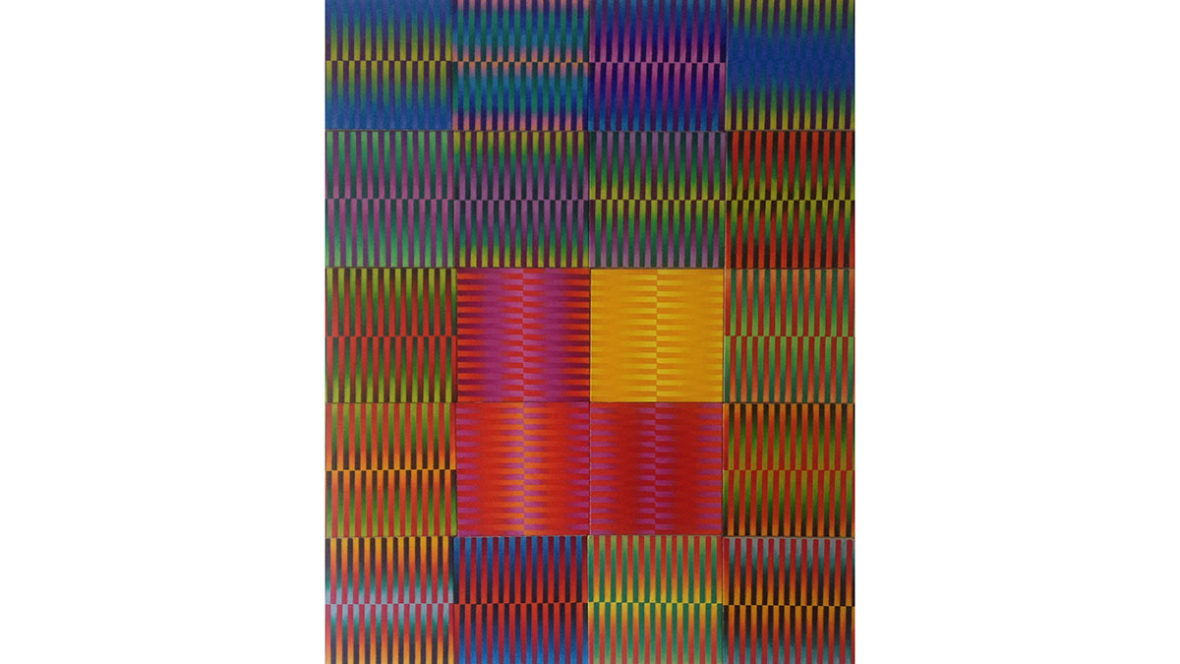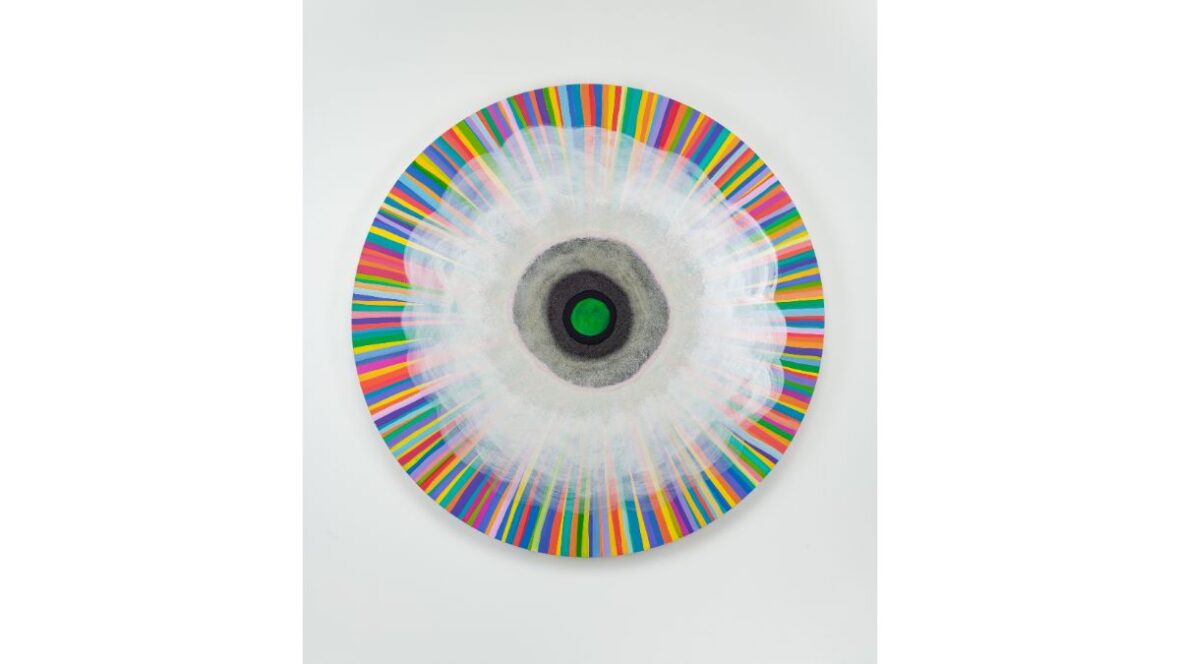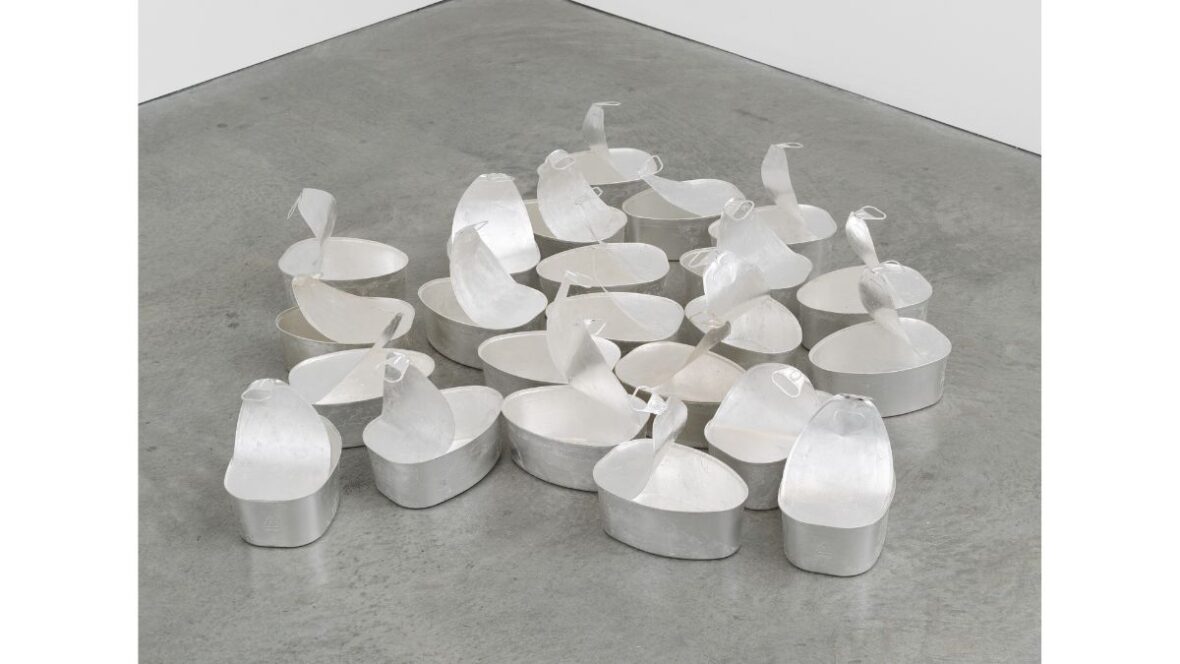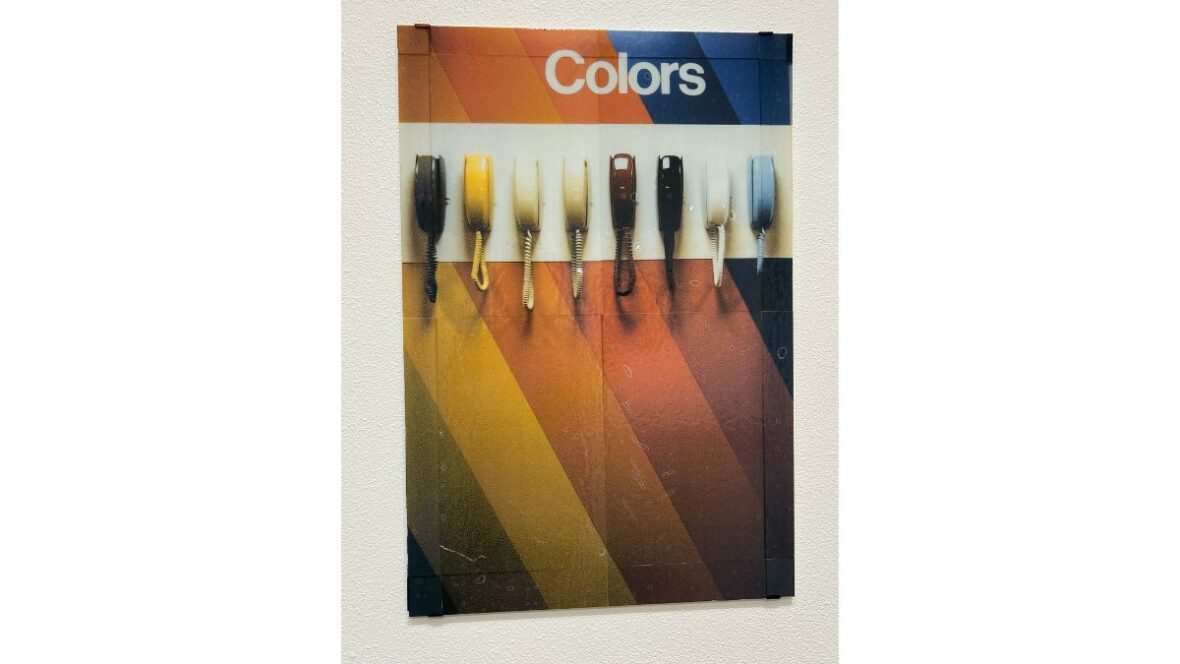Paintings:
Eva Lake
Exhibition Essay
For Eva Lake a work of art is performative. It exists to provide the experience, not its copy or simulation. In most of the work, Lake accomplishes this through her square canvases composed of alternating pairs of dichroic bands whose colors vary in intensity. While the uniformity of Lake’s patterns suggest the mechanical, upon closer scrutiny the trace of her freehanding adds to the works’ physicality. These canvases vibrate.
Lake has been investigating the endless possibilities of the square for over five years. In both her engagement with color and her use of the square and grid, Lake acknowledges the work of Josef Albers (1888-1976) and British Op Art painter, Bridget Riley (b. 1931). However, the work and ideas of Kasimir Malevich (1878-1935) and Yves Klein (1928-1962) have been of greater consequence for Lake.
As the originator of Suprematism in the second decade of the 20th century, Malevich rejected representation and worked with fundamental geometric forms, especially the circle and square. While attempting to make paintings that existed in and of themselves, with no external references, Malevich painted squares comprised of planes of color in mono- or polychrome compositions.
Klein’s intense monochrome paintings form the I950’s aimed at providing an experience that did not depend on definitions, boundaries or dimensions. Color (most particularly, blue), for Klein, became a path to the “immaterial” – defined as the sum of all experience and all places. His paintings, like Malevich’s, existed in themselves, and referred to his “pursuit of the undefinable”.
Just as Malevich believed: “A painted surface is a real living thing”, Lake endeavors to make her paintings live as objects. Her work recreates the experience of seeing. While Lake’s titles give the viewers clues – Night Ride – it is color that transmits how something looks and how it feels – how it is.
With thanks to P. Roberts
Artist
Eva Lake




